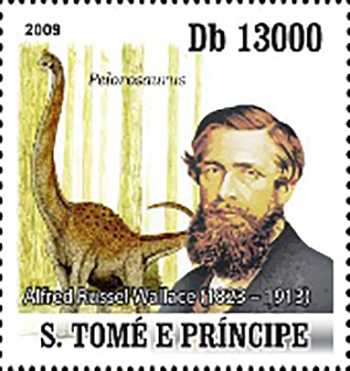Pelorosaurus conybearei Melville, 1849

(Da: it.wikipedia.org)
Phylum: Chordata Haeckel, 1874
Subphylum: Vertebrata Cuvier, 1812
Classe: Dinosauria Owen, 1841
Ordine: Saurischia Seeley, 1887
Famiglia: Brachiosauridae Riggs, 1904
Genere: Pelorosaurus Mantell, 1850
Descrizione
Il Pelorosaurus era un erbivoro gigantesco, dalle dimensioni straordinarie: l'altezza doveva aggirarsi sui 12 metri, mentre la lunghezza poteva arrivare ai 22 metri. Il peso è stimato intorno alle 40-45 tonnellate. Il pelorosauro era un erbivoro dal collo lunghissimo, brucatore delle cime degli alberi, appartenente al gruppo dei sauropodi. Probabilmente questo animale era affine, anche se più snello, al ben più noto Brachiosaurus, vissuto in un'epoca leggermente anteriore.
Diffusione
Gigantesco dinosauro quadrupede caratteristico del Cretacico inferiore, i cui resti sono stati rinvenuti nei famosi giacimenti del Weald nell'Inghilterra meridionale. Descritto per la prima volta da Mantell nel 1850, questo dinosauro è però poco conosciuto, data la scarsità dei resti fossili.
Sinonimi
= Cetiosaurus brevis Owen, 1842 = Cetiosaurus conybeari Melville, 1849.
Bibliografia
–Holtz Jr., Thomas R. (2012). "Dinosaurs: The Most Complete, Up-to-Date Encyclopedia for Dinosaur Lovers of All Ages" (PDF).
–Owen, R (1842). "Report on British fossil reptiles, Part II". Reports of the British Association for the Advancement of Science. 11: 60-204.
–Melville, A.G. (1849). "Notes on the vertebral column of Iguanodon". Philosophical Transactions of the Royal Society of London. 139: 285-300.
–Taylor, M.P.; Naish, D. (2007). "An unusual new neosauropod dinosaur from the Lower Cretaceous Hastings Beds Group of East Sussex, England". Palaeontology. 50 (6): 1547-1564.
–Mantell, G.A. (1850). "On the Pelorosaurus: an undescribed gigantic terrestrial reptile, whose remains are associated with those of the Iguanodon and other saurians in the strata of Tilgate Forest, in Sussex". Philosophical Transactions of the Royal Society of London. 140: 379-390.
–Owen, R., 1853, Monograph on the fossil Reptilia of the Wealden and Purbeck formations, Palaeontological Society, London.
–Owen, R., 1859, Monograph on the fossil Reptilia of the Wealden and Purbeck formations. Supplement no. II. Crocodilia (Streptospondylus, etc.). [Wealden.] The Palaeontographical Society, London 1857: 20-44.
–Taylor, Michael P.; Naish, Darren (2007). "An unusual new neosauropod dinosaur from the Lower Cretaceous Hastings Beds Group of East Sussex, England" (PDF). Palaeontology. 50 (6): 1547-1564.
–International Commission on Zoological Nomenclature. 2014. "OPINION 2331 (Case 3472): Cetiosaurus Owen, 1841 (Dinosauria, Sauropoda): usage conserved by designation of Cetiosaurus oxoniensis Phillips, 1871 as the type species". Bulletin of Zoological Nomenclature 71(1): 48-50.
–Quenstedt, F.A., 1852, Handbuch der Petrefaktenkunde, 1st edition. H. Laupp'schen, Tübingen pp. 1-792.

|
Data: 01/07/2009
Emissione: Alfred Russel Wallace (1823-1913) e Charles Darwin (1989-1982) Stato: St. Thomas and Prince Nota: Emesso in un foglietto di 4 v. diversi |
|---|